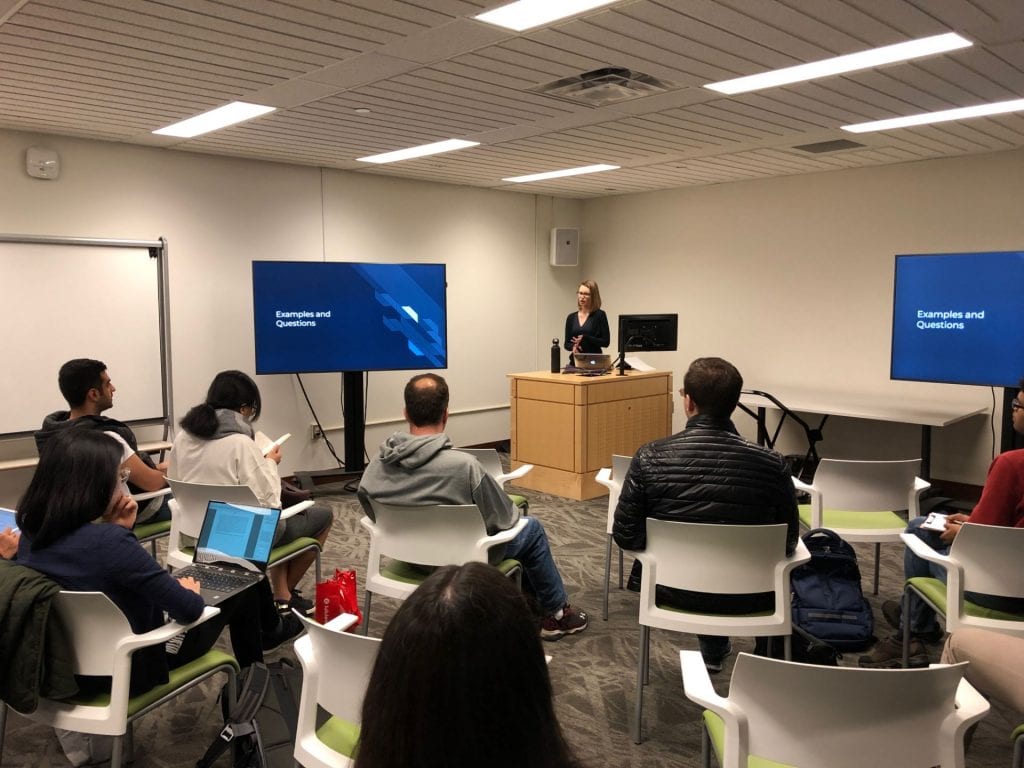April 7, 2019
An iterative approach to space planning
In the Foster Business Library, we were excited to recently welcome the first students into our newly developed Business Research Commons. Modeled (very modestly) on the UW Research Commons, the new space allows us to offer topical events and programs, separate from classroom visits, for all business researchers — whether or not they are business majors. Our first session was an introduction to citation management tools, with about a dozen highly engaged business Ph.D. students in attendance.

Library graduate assistant Mariah McGregor teaches business Ph.D. students about citation management tools.
While we business librarians had long aspired to carve out space to expand our business instruction offerings, making the case and articulating our vision became clear by aligning our efforts with the Libraries Strategic Plan. Developing this venue marks the beginning of our contribution toward key strategic goals in “evolving library spaces” and “investing in sustainable teaching endeavors.”
Right now, the Business Research Commons is small but utilitarian. The space includes a new instructor’s podium, TV monitors on wheels and 30 new chairs. But with pilot programming underway, we aim to launch a fall series bringing together business students and campus-wide business researchers to discuss information resources, software and tools, and hear from related speakers. Our objective is to sustainably expand Foster Business Library’s outreach and impact through this designated venue.
Launching the Business Research Commons has required a systems-thinking approach and a budget. Our Libraries Information Technology Services (ITS) colleagues helped us understand the challenges and opportunities of creating a new technology-enabled space, but our talks with ITS also built connections with UW Classroom Technologies and secured collaborative funding from the UW Student Technology Fee. (Other funding came from Libraries operations budget and the business library’s designated gift fund.)
While our next steps will focus on creating a series of engaging events and programming, we are only getting started. As we bring more people into the space to see what works and what is missing, we plan to develop a longer-term vision for expanding the footprint—offering more seating and set-up options, adding videoconferencing and installing a divider wall to preserve the quiet that our patrons appreciate.
For now, though, we are fortunate and excited to have begun. If our first students in attendance were an indication, we anticipate an active new learning space that contributes to our Libraries-wide effort in helping students reach their full potential as learners.
